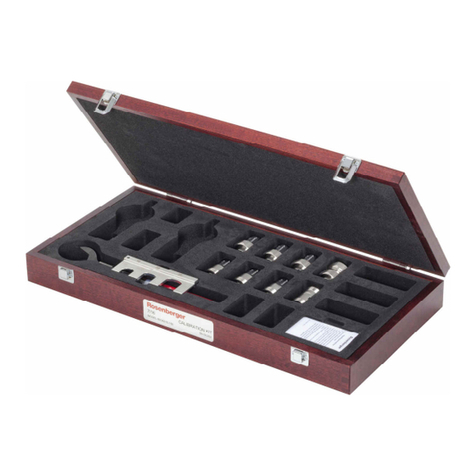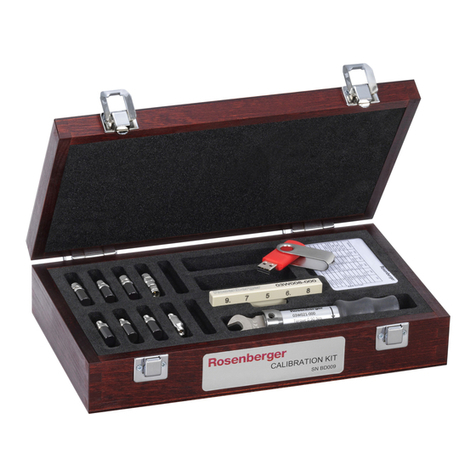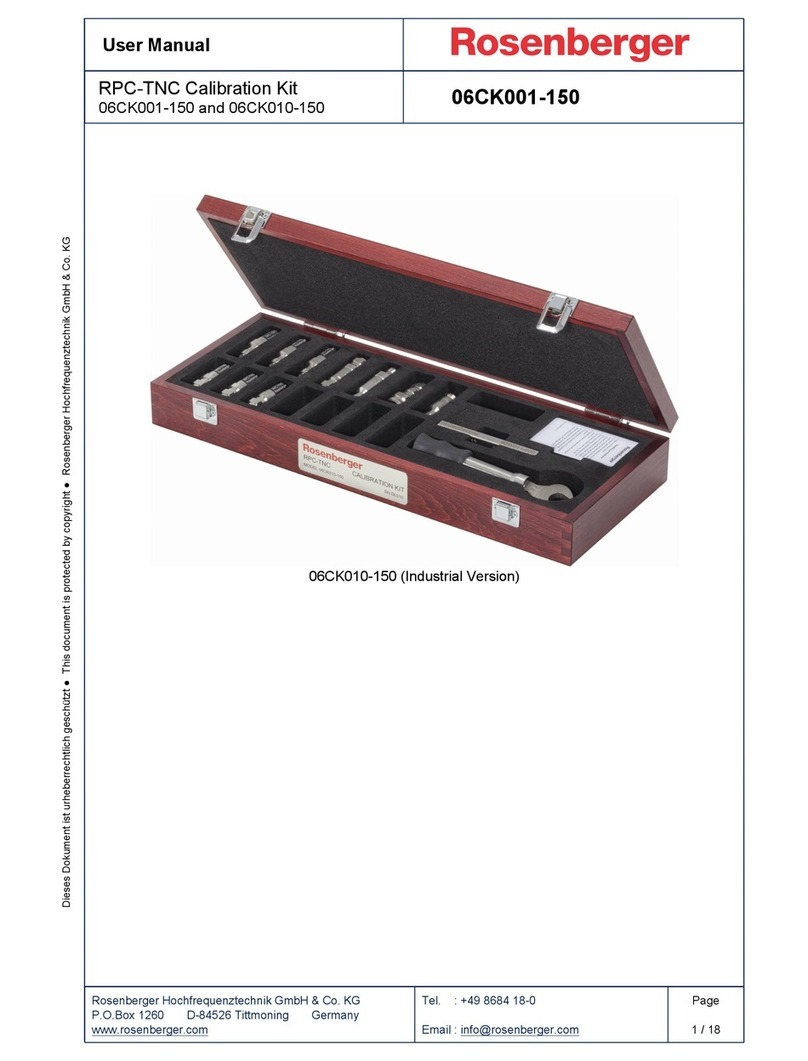
User Manual
SMP Calibration Kit 19CK010-150
Rosenberger Hochfrequenztechnik GmbH & Co. KG
P.O.Box 1260 D-84526 Tittmoning Germany
www.rosenberger.com
Tel. : +49 8684 18-0
Page
3 / 16
Dieses Dokument ist urheberrechtlich geschützt
● This document is protected by copyright ● Rosenberger Hochfrequenztechnik GmbH & Co. KG
1. General Information
This User Manual is valid for the Calibration Kit
19CK010-150 (Industrial Version)
1.1 Calibration Kit Normal Use
Calibration Kits are used as an accessory for Vector Network Analyzers (VNA) to perform
vector-error correction. Vector-error correction is the process of characterizing systematic errors
of the measurement system by measuring known calibration standards, and then
mathematically removing the effects of these errors from subsequent measurements. The
measurement accuracy of the calibrated VNA depends mainly on the quality of the calibration kit
used. Contributing factors are noise, linearity and temperature stability of the VNA, transmission
and reflection stability of a test port cable as well as operator experience and care.
VNAs usually offer several techniques for correcting systematic measurement errors. The
standards in this calibration kit allow you to perform one-port OSL (OSM) or two-port OSLT
(TOSM) and TRM (TMR) calibrations from DC up to 40 GHz for measurements of components
with SMP connectors.
RPC-2.92 to SMP adapters are included in this calibration kit to interface with standard
2.92 mm, K or 3.5 mm test port cables and VNAs.
1.2 Warnings
The calibration standards of this calibration kit are mechanically extremely sensitive devices.
High accelerations e.g. when falling down or high forces to the connector fingers will damage
them.
When connecting and disconnecting male and female connectors keep them in a straight line as
much as possible. Radial misalignment (more than permitted) stresses the fingers of the female
outer conductor significantly and leads to bent or broken fingers. This results in a very unstable
or bad RF performance.
Connect the calibration standards only to test ports and other devices that have been cleaned
and checked for gauge, concentricity and integrity of the contact fingers. Detailed procedures
are described in Chapter 6 and 7.
Tighten the connector coupling nuts of the RPC-2.92 interfaces to the recommended torque with
a torque wrench (e.g. Rosenberger 03W021-000) while holding the RPC-2.92 female counter-
part with a wrench (e.g. Rosenberger Combi Wrench 03W021-000). Do not over torque!
Consider the power applied to the Load calibration standards. Maximum power limits for the
sum of RF and DC power are defined in the specific data sheets.
It is good lab practice to use at least an ESD wrist strap when handling calibration standards or
DUTs on a VNA although the calibration standards themselves are not ESD sensitive. Please
consult your VNA manual.






























